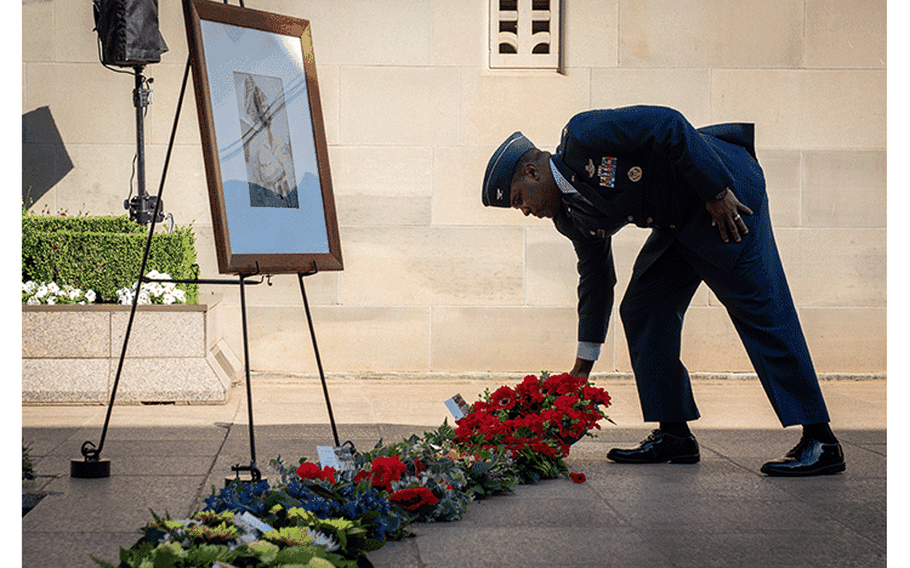Community News
374th AW/CC talks bilateral future with RAAF partners
374th Airlift Wing Public Affairs November 27, 2019

Col. Otis C. Jones, 374th Airlift Wing commander, pays respects during a Last Post Ceremony, Nov. 21, 2019, at Canberra, Australia. During the ceremony, visitors are invited to lay wreaths and floral tributes for a fallen soldier. (U.S. Air Force photo by Senior Airman Juan Torres) ()
Yokota Air Base, Japan -- 374th Airlift Wing commander, Col. Otis C. Jones, and Chief Master Sgt. Nicole Wilson, 374th Communications Squadron chief enlisted manager, visited Australian military partners to discuss their priorities and Yokota Air Base's mission and capabilities as the Pacific Air Force’s airlift hub.
During his one-week visit, Jones met with Royal Australian Air Force partners and U.S. service members and toured a number of facilities. The trip was intended to demonstrate the U.S. Air Force’s commitment to strengthening the longstanding alliance with the RAAF and expanding new partnerships.
During the visit, Jones had the opportunity to discuss the progress of mutual Pacific Air Forces and RAAF strategic objectives that further deepen interoperability between the services and better support these joint force programs.
These common objectives come from the U.S. - Australia Posture Agreement, signed in August 2014, which provides guidance to improve RAAF airfields to support training and to increase capability for contingencies in the region.
“When we talk about the strategy in the Indo-Pacific region, over the next five to ten years there will be a significant investment from a PACAF perspective in the infrastructure here to increase our presence, training and exercises,” Jones said. “From an operational perspective, this will be an area that we focus on.”
These investments are aimed at enhancing PACAF’s posture and its capacity of projecting air power across the region in support of a free and open Indo-Pacific.
In addition to these initiatives, Jones also mentioned the important role Airmen in the region will play in developing and supporting these PACAF and RAAF strategies.
“It’s important to visit these Airmen in austere locations and for them to be able to hear the command team’s leadership philosophies, our mission set, expectations, and to engage with the teams and have them understand they are a huge part of team Yokota, our mission and goals in the region” Jones said.
“We wanted to let them know that we’re supporting all their efforts, we understand their challenges, and wanted to emphasize the importance and significance of their role here in the next few years,” Jones added.